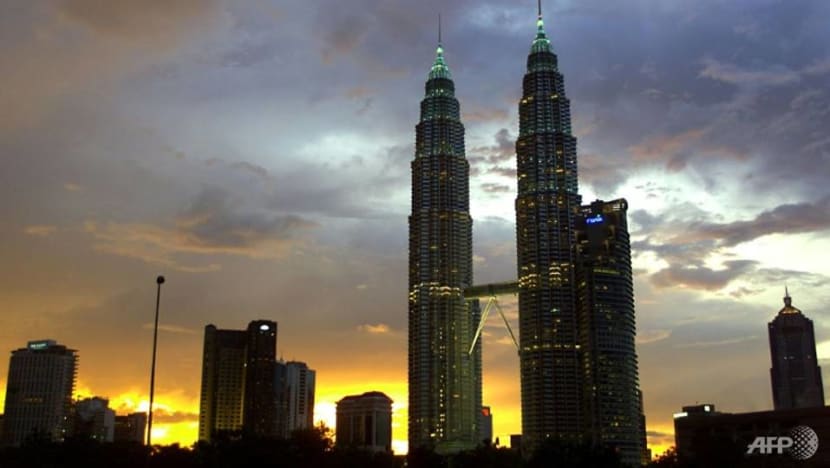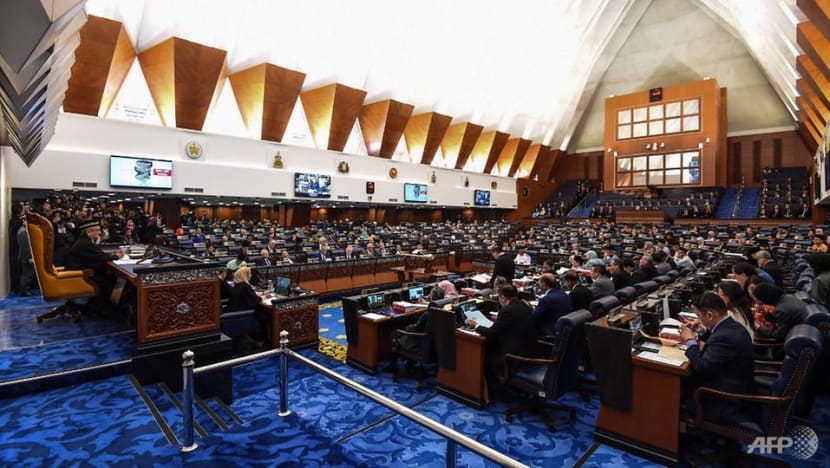commentary Commentary
Commentary: Malaysia's lowering of the voting age and the huge forces fueling the change
The Reformasi movement will now be continued by the next generation of Malaysian youths, says Penang Institute’s Ooi Kee Beng.

Pakatan Harapan supporters cheer and wave their party flags on the road leading to Prime Minister's Office of Malaysia in Putrajaya, Malaysia on May 10, 2018. (Photo: AP/Sadiq Asyraf)
PENANG: In 2018, six decades after the Federation of Malaya first held elections, the Malaysian parliament made two sweeping changes to the Constitution.
First, to automate the voter registration process. Second, to allow citizens who are 18 and older to vote, starting with the next general elections due to be held before mid-2023.
The earlier 21-year-old age limit was previously set in line with the practice in the United Kingdom at the time independence was granted to Malaya, in 1957.
VOTING AGE LOWERED IN THE WEST 50 YEARS AGO
In the West, as the post-war baby boom generation came of age, the demand for their right to vote grew ever stronger, especially under the cloud of the unpopular Vietnam War. The major argument then went as such, that if one is old enough to be drafted into battle, one is also old enough to vote.
In 1969, the United Kingdom decided to lower the British voting age to 18. This opened the floodgates, with the US, Canada, West Germany and France following suit over the next five years.
In Asia, things have moved much more slowly. The most recent country before Malaysia to decide that 18-year-olds are mature enough to vote, was Japan, in 2016.
THE SOCIO-ECONOMICS OF CHANGE
Many have attributed the resounding changes in Malaysia to political opportunism, optimism and expediencies involved, alongside the commendable activism of certain individuals. But it’s worth considering the socio-economic reasons fueling the gradual but dramatic changes in Malaysia since the 1998 Reformasi movement began.

These include issues such as broad youth activism stimulated by the sacking of Anwar Ibrahim when he was Deputy Prime Minister, increasing urbanity, a higher level of education and the coming of age of the Internet and social media.
Unlike in the West, no obvious baby boom can explain the rise in activism or the successful demand for the lowering of the voting age. Malaysia’s population growth had always been rather strong, ranging from 2.3 per cent to 2.8 per cent before 2000, and falling below 2 per cent only after 2002.
The pattern of increasing urbanity and the higher level of education can be studied together.
READ: Malaysia is falling into a middle-income trap, a commentary
Urban dwellers in Malaysia made up 26.8 per cent of the population in 1970, rising quickly to 34.2 per cent in 1980, then to 50.7 per cent by 1991, reaching 62 per cent in 2000. By 2017, three of every four Malaysians were living in an urban setting.
THE POLITICS OF URBAN DWELLERS
Another pattern to consider is that the peninsular states which most strongly opposed the federal government in 1969 were the same states whose voters most clearly opposed central power in 2008.
This dynamic held steady in 2013 and 2018 except for the state of Johor, where opposition support was low in 2008, only to rise quickly over the following two elections to precipitate the fall of the state and the federal government on May 9, 2018.

Significantly, Johor Bahru was the urban centre outside of the Klang Valley that saw the fastest growing population - between 1991 and 2000, it rose by about 280,000 people, from 468,800 to 642,900.
The similarity between 1969 and 2008 strongly suggests that the voting pattern on the peninsula in 1969, which was hastily declared a racial divide, was an urban-rural one, and not merely an ethnic phenomenon. Urbanity has definitely been playing a key role in deciding political preferences over the decades.
The many attempts by the federal government since the 1970s at gerrymandering and malapportionment, including the exercise of making Kuala Lumpur a federal territory separated electorally from Selangor state, in the end functioned merely as delaying tactics.
READ: Malay political unity in Malaysia is but a myth, a commentary
They were futile when observed across half a century when national development made further urbanisation inevitable.

THE EXPLOSION OF THE INTERNET
Yet the most decisive factor that precipitated the fall of the Barisan Nasional coalition in 2018 was this: The dismantling of government control over information with the rise of the Internet and information communication technology.
The news portal, Malaysiakini, founded just 41 days before the turn of the century, and 14 months after Anwar Ibrahim was sacked and detained, and the Reformasi Movement that followed, not only ignited the political fervour of urban youths but kept their passions and aspirations burning.
READ: Race, religion and rhetoric ramp up in New Malaysia, a commentary
It also created enabling conditions for the rise of the Bersih movement, whose focus on the technicalities of the electoral process, earned it huge popularity and sustained the coalition Anwar Ibrahim had begun building in 2005.
The Bersih movement’s demands were hard to reject on grounds of principle, and its inclusive agenda, which were non-racial in essence, won it broad support from civil society groups.
READ: Malaysia goes in search of a more inclusive growth formula, a commentary
WIDE NON-RACIAL APPEAL
Judging from how the voting-age amendment was passed unanimously, it is clear all political parties think that supporting the lowering of the voting age is the only way to go.
For some, most notably the United Malays National Organisation (UMNO), going against this trend would hurt them in the coming elections. There was nothing to be gained in opposing it or in abstaining from voting.

Malaysia has strong reason to be optimistic about the lowering of the voting age. Having more young people participate and run for office, and easing their participation through automatic voter registration, will have game-changing effects on its political culture.
READ: PM Mahathir has no interest in building a dynasty, a commentary
No doubt all parties are taking a risk in supporting this change. Engaging a huge, young, urban and well-informed voter population will be a massive challenge for politicians who are used to focusing on their core constituencies.
The young will be an unpredictable constituency, and the “middle ground” so dear to politicians and central to their strategising, will be fundamentally transformed; Politicians’ walk and talk will now have to evolve accordingly.
Dr Ooi Kee Beng is the Executive Director of Penang Institute, and Visiting Senior Fellow at ISEAS – Yusof Ishak Institute. His recent books include Catharsis: A Second Chance for Democracy in Malaysia.














